| Title | Multisensory flicker modulates widespread brain networks and reduces interictal epileptiform discharges. |
| Publication Type | Journal Article |
| Year of Publication | 2024 |
| Authors | Blanpain, LT, Cole, ER, Chen, E, Park, JK, Walelign, MY, Gross, RE, Cabaniss, BT, Willie, JT, Singer, AC |
| Journal | Nat Commun |
| Volume | 15 |
| Issue | 1 |
| Pagination | 3156 |
| Date Published | 2024 Apr 11 |
| ISSN | 2041-1723 |
| Keywords | Brain, Cross-Over Studies, Electroencephalography, Epilepsies, Partial, Epilepsy, Humans, Temporal Lobe |
| Abstract | Modulating brain oscillations has strong therapeutic potential. Interventions that both non-invasively modulate deep brain structures and are practical for chronic daily home use are desirable for a variety of therapeutic applications. Repetitive audio-visual stimulation, or sensory flicker, is an accessible approach that modulates hippocampus in mice, but its effects in humans are poorly defined. We therefore quantified the neurophysiological effects of flicker with high spatiotemporal resolution in patients with focal epilepsy who underwent intracranial seizure monitoring. In this interventional trial (NCT04188834) with a cross-over design, subjects underwent different frequencies of flicker stimulation in the same recording session with the effect of sensory flicker exposure on local field potential (LFP) power and interictal epileptiform discharges (IEDs) as primary and secondary outcomes, respectively. Flicker focally modulated local field potentials in expected canonical sensory cortices but also in the medial temporal lobe and prefrontal cortex, likely via resonance of stimulated long-range circuits. Moreover, flicker decreased interictal epileptiform discharges, a pathological biomarker of epilepsy and degenerative diseases, most strongly in regions where potentials were flicker-modulated, especially the visual cortex and medial temporal lobe. This trial met the scientific goal and is now closed. Our findings reveal how multi-sensory stimulation may modulate cortical structures to mitigate pathological activity in humans. |
| DOI | 10.1038/s41467-024-47263-y |
| Alternate Journal | Nat Commun |
| PubMed ID | 38605017 |
| PubMed Central ID | PMC11009358 |
| Grant List | R01 MH120194 / MH / NIMH NIH HHS / United States RF1 AG078736 / AG / NIA NIH HHS / United States R01 NS109226 / NS / NINDS NIH HHS / United States RF1 NS109226 / NS / NINDS NIH HHS / United States T32 EB025816 / EB / NIBIB NIH HHS / United States P41 EB018783 / EB / NIBIB NIH HHS / United States U01 NS113198 / NS / NINDS NIH HHS / United States |

